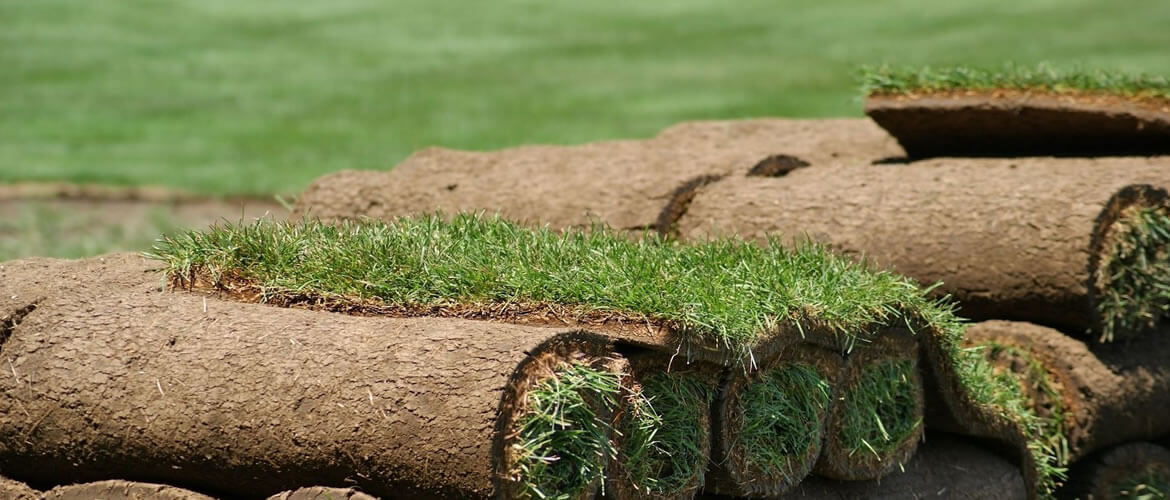SOD Installation
We provide high quality sod blends, lawns, turf, and alternative land covering options at good prices. Shambach Contrivers can help you decide which blend is the best to suit your landscaping needs. Depending upon conditions such as Sun light, traffic, coverage, the local climate environment, and pets
At Shambach Contrivers we take all of your inquiries seriously, where we will answer all calls, return emails, and even text for your lawn needs. We offer sod delivery and installation with quality sod blends at wholesale pricing . Transforming a drab area into a vibrant green thriving lawn for everyone in the home to enjoy.
Installation Instructions
Install sod as soon as possible, within 24 hours. The hotter the weather, the sooner it must be laid to ensure healthy sod. To install, fit sod closely end to end. Stagger placement of strips to give a brick-like pattern. Avoid using small patches (less than 1 square foot), as they are prone to drying out quickly.
After sod is in place, give sod a light watering and roll with a water ballast type roller to ensure good contact between sod and soil.
WATER! Saturate sod IMMEDIATELY after rolling the sod to approximately 6 inches deep. THIS IS CRUCIAL. You should be able to slide a screwdriver easily into the lawn. You are trying to get the roots to grow from our soil into yours and the deeper the roots, the more drought resistant and healthier it will be.
Break up clods and grade and smooth area. This will ensure proper water drainage. Slope should be 1″ per 10 feet.
Roll the area to provide a firm base for the sod. Soil surface should be 1-1.5 inches below sidewalks or border areas to allow for sod thickness. Evenly spread a turf starter (18-24-6) fertilizer on the prepared area.
Remove old lawn and spade or rototill the area 4″-6″ inches deep. Organic soil amendments can be added if necessary. Sand can be added to improve drainage.
Sod Care
Water Regularly
After Installation, a new sod lawn should be saturated to a depth of 6 inches. Reduce frequency and increase depth of water penetration after this period. Established lawns require 1″ of water per week when it 70F. Avoid night and evening watering, as it increases the risk of fungus.
A good rule of thumb for watering:
70F = 1″ 90F = 3″
80F = 2″ 100F = 4″
Mow Regularly
Height of cut varies from season to season and the amount of traffic. However, never allow our Fescue and Bluegrass to exceed 3 inches in height. The best cutting height for our sod is 1.5 to 2 inches. Our sod should be cut at 2 inches during the summer. The lower the lawn is mowed, the higher the maintenance costs, so never cut over 1/3 of the top growth in one mowing and remove the clippings after mowing.
Fertilize Regularly
Fertilize regularly throughout the year, typically once a month. A strong and vigorous lawn requires fertilization. Your new lawn should be fertilized about 15 days after installation with a turf builder or any complete fertilizer.
Fertilizer Yearly Schedule
January-February:
Fertilizer with a pre-emergent chemical to prevent crabgrass. Examples include Scott’sTurf Builder with Halts and Best Fertilizer’s Weed and Feed.
April-May:
Complete fertilizer such as: Scott’s Turf Builder, Best Fertilizer, Turf Supreme and Turf Royal
June-July:
No fertilizing
September-October:-
Fertilizer with a pre-emergent chemical to prevent Fall weeds. Use products such as Scott’sTurf Builder with Halts and Best Fertilizer’s Weed and Feed
Disease Prevention
- Avoid watering lawn between the hours of 6pm to 2am in the summertime, this helps to prevent fungus.
- Avoid fertilizing with a high nitrogen fertilizer, as this promotes fungus growth.
- Don’t let your lawn get too tall, this prevents air circulation, which creates an ideal environment for fungus.
- Do not fertilize during hot weather (90F+)


